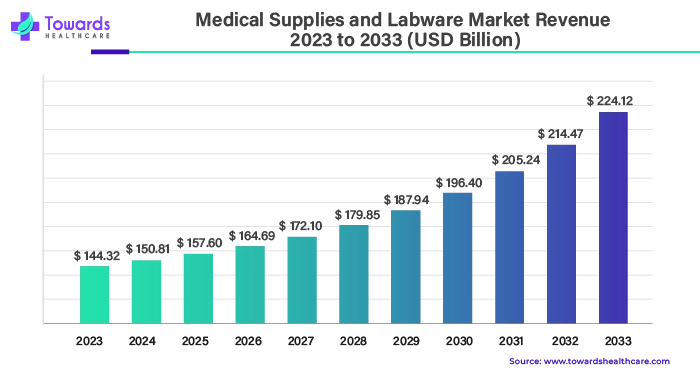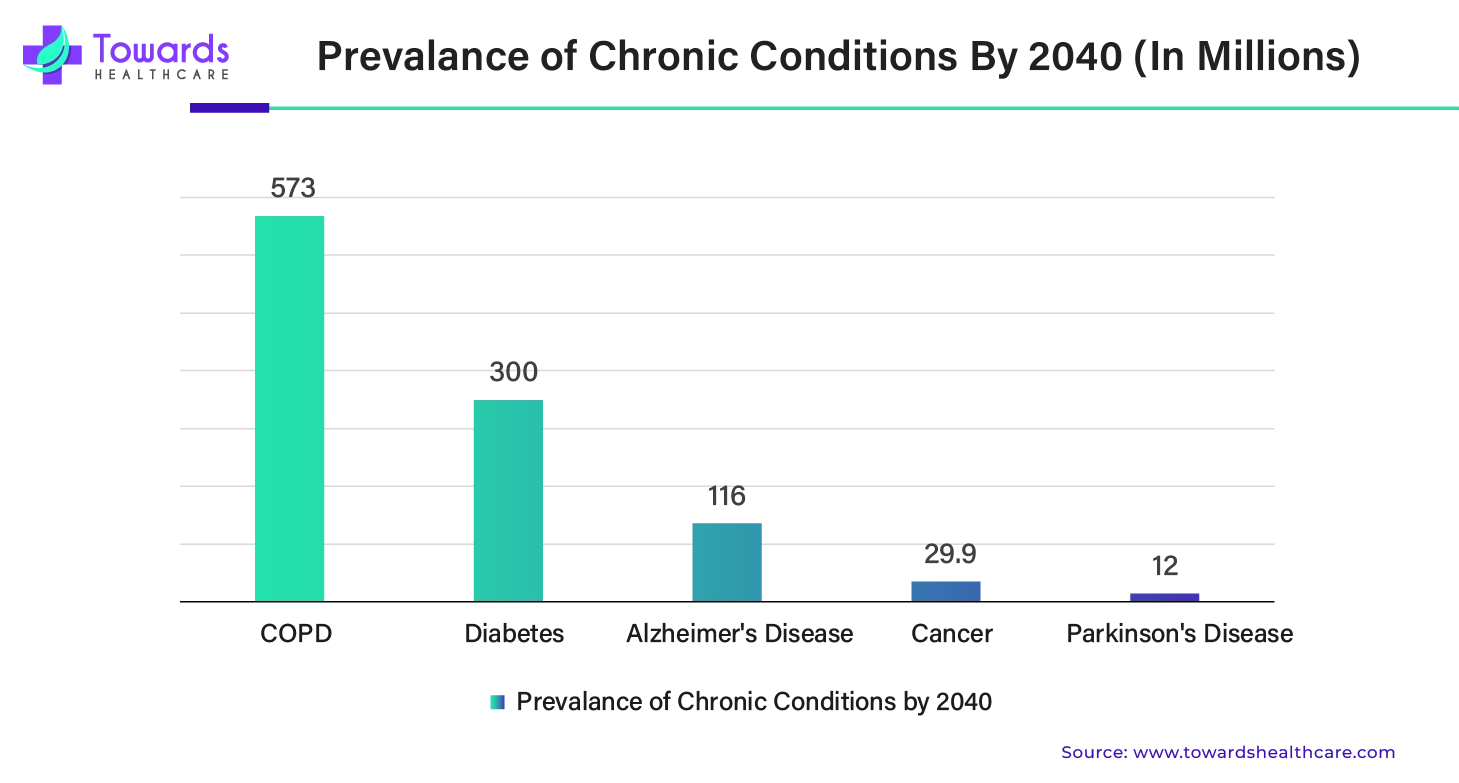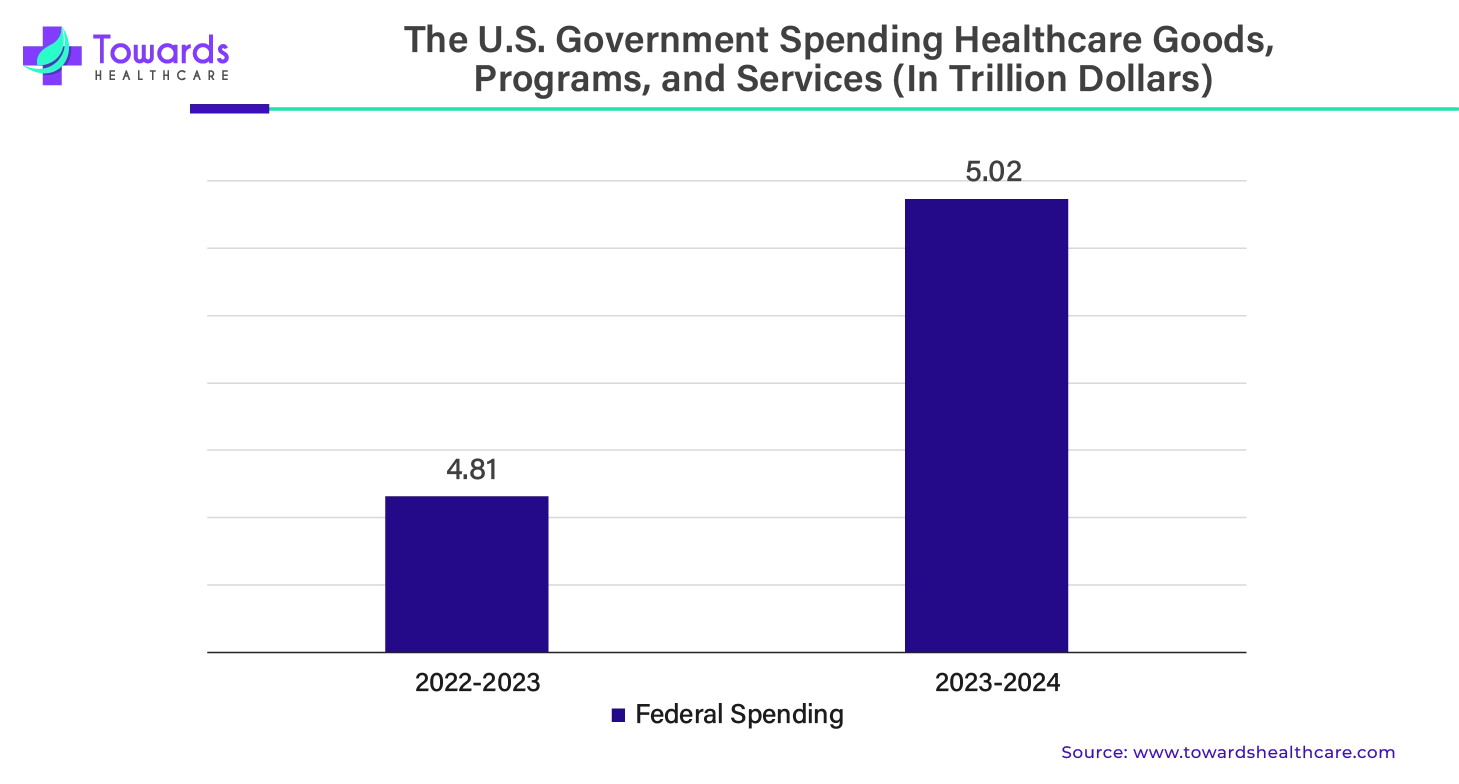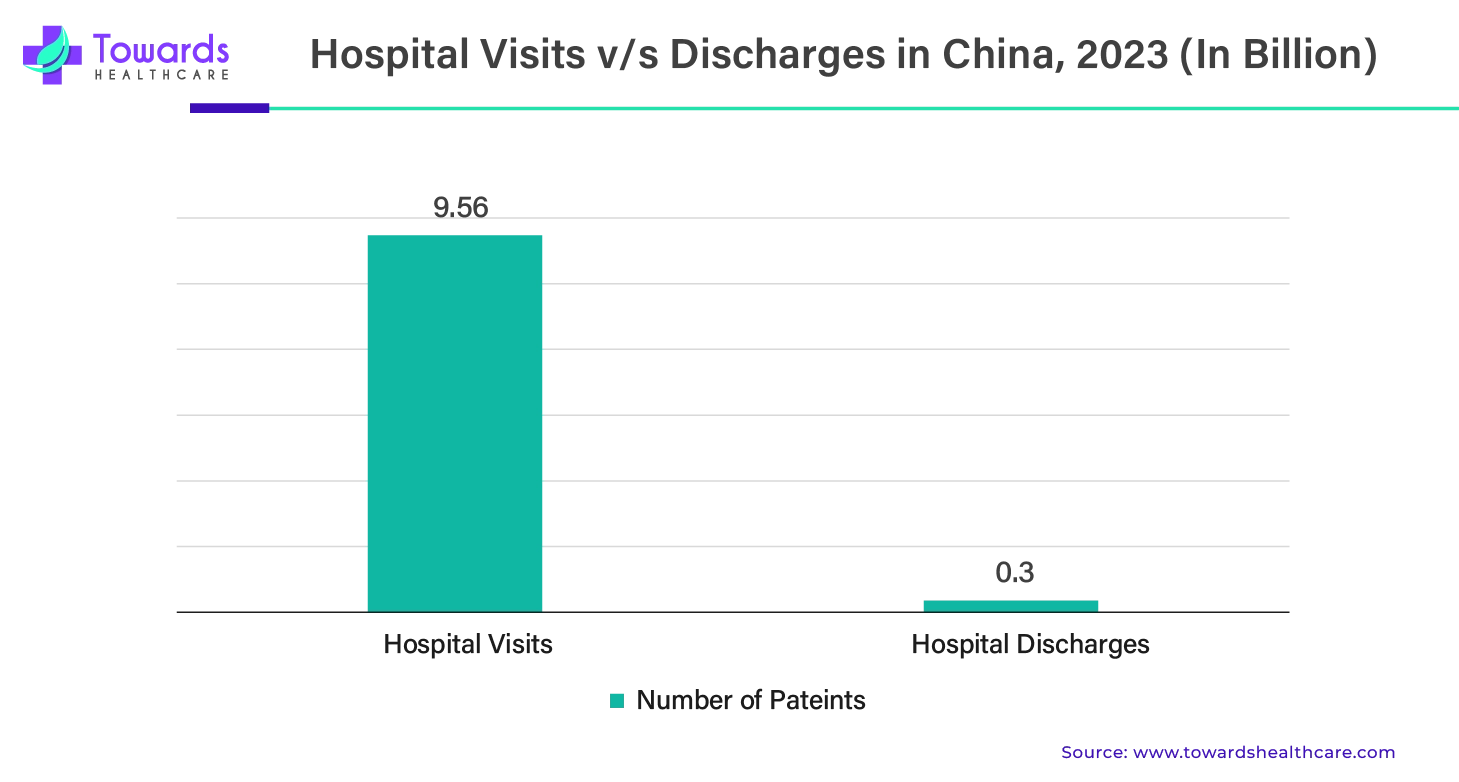April 2025

The global medical supplies and labware market size was estimated at US$ 144.32 billion in 2023 and is projected to grow US$ 224.12 billion by 2033, rising at a compound annual growth rate (CAGR) of 4.50% from 2024 to 2033. The growing prevalence of diseases due to different environmental, genetic, and other factors is increasing the demand for medical supplies and labware.

The medical supplies and labware market manufactures and distributes medical supplies and labware for hospitals, clinics, surgical ambulatory centers, diagnostic laboratories, research laboratories and other medical facilities. More is needed for comprehensive health care services than just medications. The provision of high-quality healthcare and the enhancement of patient health also requires the use of diagnostic tests, medical equipment, and laboratory equipment. Laboratory product suppliers are essential to the efficient operation of hospitals in the complicated and constantly changing field of healthcare. These vendors serve as the backbone of medical laboratories by offering a vast array of key supplies and tools required for precise diagnosis, patient health monitoring, and critical research.
| Company Name | Sky Medical Supplies |
| Headquarters | Denver, U.S., North America |
| Recent Launch | In June 2024, Sky Medical Supplies introduced a new range of reasonably priced medical supplies comprising hospital beds, oxygen concentrators, lift chairs, mobility scooters, and wheelchairs with manual and electric functions. The company's goal is to ensure that everyone has access to the resources they need for a higher quality of life by offering trustworthy and reasonably priced medical equipment to those who are in need. By introducing the new line of mobility equipment, Sky is making a big step in the right direction. |
| Company Name | Johnson & Johnson |
| Headquarters | New Jersey, U.S., North America |
| Recent Launch | In April 2024, the Ethizia hemostatic sealing patch and the Cereglide aspiration catheter are the two new items that the massive medical device company Johnson & Johnson (J&J) has introduced in Europe, the Middle East, and Africa. |

Chronic illness is becoming more commonplace worldwide, which makes it one of the major healthcare challenges of the twenty-first century. Because the impacts of these chronic illnesses are persistent and can affect a person for their whole lifespan, individuals and medical providers need to provide ongoing care. Due to continuous monitoring, treatment, and check-ups, patients with chronic conditions need medical supplies and labware. Many medical supplies and labware are used for single use. As the geriatric population grows, the prevalence of chronic conditions also grows, which is driving the medical supplies and labware market. It is estimated that the healthcare cost of chronic diseases will grow to $37 trillion across the globe by 2030.
During the procedure, a tremendous amount of garbage is produced. About 85% of the garbage produced by healthcare operations is normal, non-hazardous waste, which is similar to waste produced at home. The remaining fifteen percent is regarded as a dangerous material that could be radioactive, toxic, or pathogenic. The average amount of hazardous waste produced daily per hospital bed in high-income countries is up to 0.5 kg, compared to 0.2 kg in low-income ones. Drug-resistant microbes that contaminate the environment and spread from healthcare facilities are one source of potential dangers. The main environmental problems that have a negative impact on health are air and land pollution. By releasing viruses and hazardous substances into the environment, the handling and disposal of medical waste may inadvertently cause health concerns.
The worldwide market for medical supplies has a lot of potential due to the rising investment in healthcare institutions. In order to address the expanding healthcare requirements of growing populations, governments, and private investors are realizing more and more how important it is to have a strong healthcare infrastructure. As a result, financing and investments in healthcare facilities—such as clinics, hospitals, and specialty care centers—have expanded. Consequently, there's a greater need for medical supplies to properly outfit these clinics. This presents a chance for suppliers and producers of medical supplies to increase their market share, establish strategic alliances, and provide cutting-edge goods and services to satisfy the changing demands of healthcare facilities across the globe.
North America dominated the medical supplies and labware market by 43% in 2023. The region is known for this technological advancement, continuous innovation, advanced healthcare system, and strong support from the government. Apart from this, North America is also home to major key players that continuously invest in research and development in order to develop better, advanced, and sustainable products. The major countries that contribute to the growth of the region are the U.S., Canada, and Mexico.
The U.S. is the dominant contributor to the growth of the medical supplies and labware market in North America. The country is known for its advanced healthcare system. To guarantee the efficacy and safety of medical devices sold in the United States, the FDA controls their sale. The Center for Medical Devices and Radiological Health (CDRH) of the FDA regulates nearly 6,000 different types of medical devices, and the classification given to each type is listed in the Medical Device Product Classification database. In order to assist the American people and cover the costs associated with borrowing, the federal government spends money on a wide range of products, services and initiatives.

The medical device sector in Canada is made up mainly of small and medium-sized businesses (SMEs) and is extremely diverse. The medical device industry in Canada was projected to be worth US$6.8 billion in 2022. Up until 2028, the market is predicted to expand by 5.4% yearly. The entire amount spent on healthcare in Canada in 2022 was almost C$331 billion, or C$8,563 per person. With US$3.2 billion in medical device exports into the Canadian market in 2022—42.6% of all imports in this industry—the US remained the leading exporter of medical devices to Canada.
Asia Pacific is estimated to grow at the fastest rate during the forecast period. The growth of the medical supplies and labware market in Asia Pacific is due to continuous efforts by governments to improve healthcare. The region is also focused on healthcare advancements with the help of key market players worldwide. The major countries contributing to the growth of the market in Asia Pacific are China, India, Japan and South Korea.
Innovation and technology are centered in China. The nation is always working to create new tools and technology to provide better healthcare services. China exports a range of equipment to foreign nations. At US$650 million, or 8.61 percent, China was the second-biggest supplier of medical equipment to Canada after the United States. In addition, China is renowned for having a highly developed healthcare system.
For instance,

India is significantly contributing to the growth of the medical supplies and labware market. The Indian government is heavily invested in reducing the burden of a growing number of patients. The country is strongly focusing on SDGs to tackle the issue. Various companies are also making efforts to provide medical equipment.
For instance,
Medical aesthetics involves procedures to improve looks, blending healthcare with beauty. These include skin treatments like tightening, hair removal, and lip fillers. People have been seeking ways to enhance their appearance for centuries, from ancient Egyptian milk and honey baths to today’s advanced aesthetic procedures.
The market for aesthetic devices is growing, driven by increasing awareness and demand for non-invasive treatments like skin tightening and wrinkle reduction. These devices also help correct imperfections from accidents, trauma, or congenital disorders. Advances in technology and a rise in minimally invasive procedures are boosting the market.
April 2025
April 2025
April 2025
April 2025